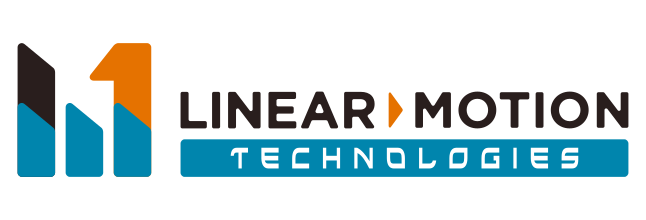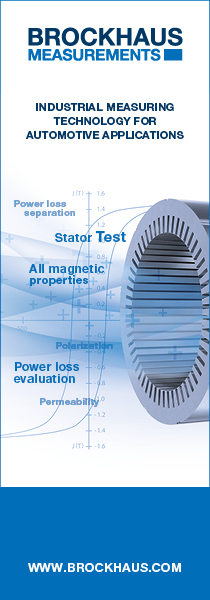Updated 31/01/17
Providing propulsion, actuation or levitation requires some unique machines and advanced control techniques. It also presents its own set of challenges. This seminar brings together experts from industry and academia to share their ideas and experiences on the topic. The event will include presentations on linear machines, actuators and self-bearing machines that levitate the rotor without the need for bearings (mechanical or magnetic). The application scope is wide with opportunities in Aerospace, Automotive, Industry and Medical to name but a few.
A visit to nearby Force Engineering will take place after the technical presentations.
TRAVEL TO THE VENUES
University
The seminar will be held at Loughborough University. The Wavy Top building is marked on this map:
https://maps.lboro.ac.uk/?l=wavy-top
Details on getting to the University and parking can be found at:
http://www.lboro.ac.uk/about/find-us/
Force Engineering
Force Engineering
4 Old Station Close
Shepshed
LE12 9NJ
A map showing a route between the university and Force Engineering can be found here.
DRESS CODE
The dress code for the day is business attire / smart casual.
ACCOMMODATION
Due to the small amount of hotels in Loughborough area, here are some of the options available, with travel timings from the University :
Premier Inn – 10 Minute Drive
Travelodge – 11 Minute Drive
Burleigh Court – 4 Minute Drive/ 9 Minute walk
The Link – 3 Minute Drive/ 12 Minute Walk
Hilton East Midlands – 13 Minute Drive
Holiday Inn East Midlands – 11 Minute Drive
Radisson Blu East Midlands – 13 Minute Drive
All the hotels have chargeable parking on site.
Event Sponsored By

Linear Motor Propulsion of Futuristic Transport Systems
by Dr Chris Lines of Linear Motion Technologies
The convergence of road and rail is the latest trend within the transport sector. On one hand, road cars and buses are moving to being electric‐powered and on towards having a means of wireless charging while they travel along. On the other hand, the rail industry is moving away from heavy trains, driven with large discrete locomotives, to lighter rail solutions with electric traction motors distributed along their entire length. Futuristic transport solutions that promise the point‐to‐point flexibility of road travel but with the resource efficiency of rail are thus a new focus. Such transport solutions are enabled with the use of linear motors as the propulsion mechanism. This talk highlights some bulk materials / freight transport, intra‐city and high‐speed inter‐city mass transit solutions being developed and some of the associated linear motor considerations and design challenges.
You must be a member to download papers. Membership Information...
Linear Motors in the 21st Century
by Mr Alan Foster of Force Engineering
One might well ask, “Whatever happened to Eric Laithwaite’s linear motor?” Fortunately it’s alive and well although most people would be unaware of this - the 6,000 LIMs powering T5’s baggage handling system are unseen by busy travelers.
Applications are wide and varied but not significant in financial terms, hence manufacturers are few. Force Engineering is a small company that has been designing and building linear induction stators for nearly 40 years. Some of the more interesting applications will be described.
LIMs are easier to control than LSMs but off-the-shelf VFDs, aimed at the rotary motor market, are rarely suitable due to the widely different operating characteristics of a LIM. The reasons why will be explained.
Until recently the construction of a stator hadn’t changed since Laithwaite’s day but a novel winding arrangement has now been patented which allows motors to be built more powerfully, more economically and more reliably.
But fashion changes and market forces have obliged the company to start investigating permanent magnet machines, including linear synchronous motors. These are particularly advantageous in the amusement industry for their higher efficiencies.
You must be a member to download papers. Membership Information...
Electromagnetic Launch of Civil Aircraft: A Comparison of Induction, Permanent Magnet Synchronous and Superconducting Motor Systems
by Dr Tom Cox of University of Nottingham
The presentation will look at the future application of electromagnetic launch (EML) technology to civil aviation. While EML systems for military aircraft launch have recently been fully developed and proven, there are also vast benefits to the use of EML for civil aircraft launch. This can give significant reductions in runway length, fuel use, engine size and ground level noise and emissions.
Three motor topologies for civil EML have been compared: Permanent Magnet Synchronous, Induction and Superconducting Synchronous linear motors. Overall launch systems using these topologies have been designed and modelled, and full comparisons have been made of performance and losses, including the superconducting cryocooler.
You must be a member to download papers. Membership Information...
Multi-rate Simulation of Low Speed Linear Electrical Machines for Wave Energy Applications
by Dr Richard Crozier of Edinburgh University
Due to the nature of wave energy extraction, which tends to operate at low frequencies with large time periods, it can be difficult to model the electrical aspects of the PTO and control system with high fidelity in a reasonable amount of computation time. This is due to the tendency of electrical systems to operate at much higher frequencies and lower time periods between events which must be captured by any transient simulation. This talk will explore a multi-rate method of simulating the system, loosely coupled via forces, positions and velocities where multiple smaller time steps are taken for subsystems in between the larger time steps suitable for the slower dynamics. This allows reduced computation times while retaining high fidelity and reasonable accuracy.
You must be a member to download papers. Membership Information...
Project HARAS a novel aerospace actuation system
by Mr Matt Slater & Andrew Gibson of Triumph Actuation
This paper presents an initial design study of a distributed, flight-control, actuation system architecture suitable for a small, slim wing aircraft platform. The paper proposes a distributed, multi-actuator architecture in comparison with a single EMA solution, and provides sizing and selection discussion regarding three main EMA components: motor, ball screw and harmonic drive gearbox.
You must be a member to download papers. Membership Information...
| Time | Session Title | Session Host |
|---|
| 09:00 | Registration Opens | |
| 09:45 | Welcome | |
| 10:00 | Linear Motor Propulsion of Futuristic Transport Systems | Dr Chris Lines, Linear Motion Technologies |
| 10:30 | Design Study on Fully Integrated Surface-Mounted Permanent Magnet Self-Bearing Machine | Dr Chenyu Nie, University of Sheffield |
| 11:00 | Coffee | |
| 11:30 | Project HARAS a novel aerospace actuation system | Mr Mark Slater, Triumph Actuation |
| 12:00 | Electromagnetic Launch of Civil Aircraft: A Comparison of Induction, Permanent Magnet Synchronous and Superconducting Motor Systems | Dr Tom Cox, University of Nottingham |
| 12:30 | Lunch | |
| 13:15 | Hyperloop - Are Magnets Attractive? | Mr Christian Zeppetzauer, Mr Emil Hansen, HypED |
| 13:45 | Multi-rate Simulation of Low Speed Linear Electrical Machines for Wave Energy Applications | Dr Richard Crozier, Edinburgh University |
| 14:15 | Linear Motors in the 21st Century | Mr Alan Foster, Force Engineering |
| 14:45 | Closing Remarks | |
| 15:15 | Tour of Force Engineering | |
| 17:00 | Close of Day | |





